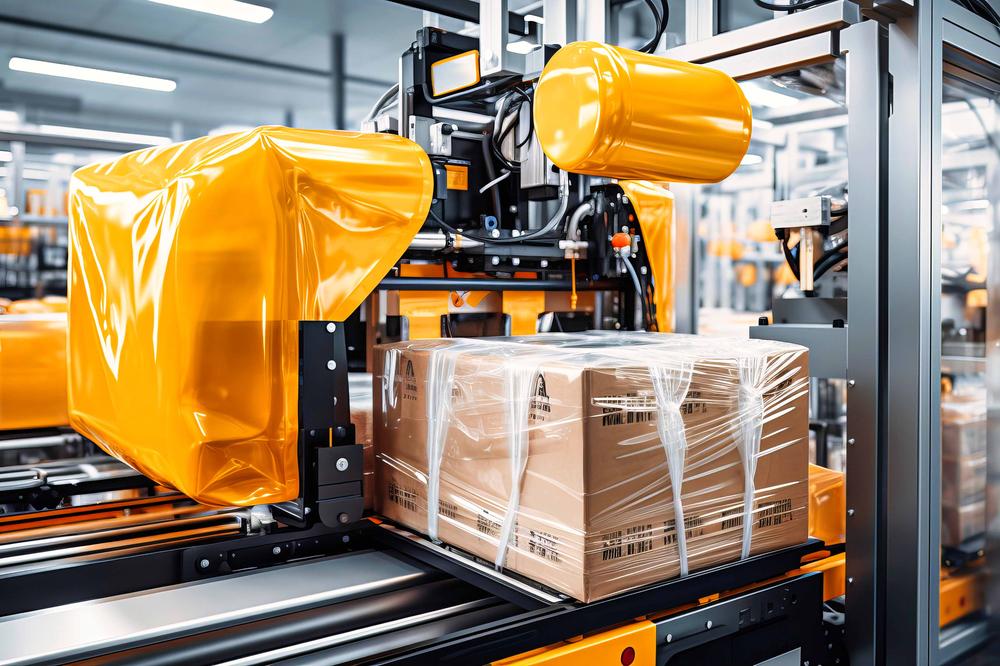
The B2B platform for the best purchasing descision. Identify and compare relevant B2B manufacturers, suppliers and retailers
Close
Filter
Result configuration
Continents
Select continent
Locations
Result types
Company type
Select company type
Industries
Select industry
Company status
Select company status preset
Number of employees
Min.
Max.
Founding year
Aerospace Harness Manufacturing (AHM)
Hyderabad, India
D
1-10 Employees
-
Key takeaway
Aerospace Harness Manufacturing (AHM) is a specialized wire harness manufacturing company for the aviation industry, offering custom solutions that enhance aircraft maintenance and operational efficiency. Their expertise ensures secure and reliable connectivity from cockpit to cabin, addressing the unique needs of aircraft wiring harnesses.
Reference
Core business
Home - Aerospace Harness Manufacturing | Custom Cables for Avionics & Defence
Aerospace Harness Manufacturing (AHM) is a wire harness manufacturing company that specializes in the Aviation industry.
InterConnect Wiring
Fort Worth, United States
B
51-100 Employees
1993
Key takeaway
InterConnect Wiring specializes in supplying electrical wiring harnesses, making it a key player in the military aerospace sector. With a commitment to quality and sustainability, the company ensures that its products are thoroughly tested and connected properly, directly impacting the effectiveness of systems used in critical situations.
Reference
Core business
InterConnect Wiring Fort Worth - Aircraft Wire Harness Manufacturers
InterConnect Wiring is a world leader in supplying electrical wiring harnesses, power distribution panels, ground support equipment,relay panels and more.
Unique Electronics
Orlando, United States
B
101-250 Employees
1980
Key takeaway
The company specializes in providing interconnects and harnesses, including conventional hardwire harnessing and molded flat ribbon cables, to leading defense contractors. Their expertise in creative harnessing design and NADCAP accreditation for cable and harness assemblies highlight their capability to deliver high-quality aircraft wiring solutions.
Reference
Product
Unique Electronics
Looking for more accurate results?
Find the right companies for free by entering your custom query!
25M+ companies
250M+ products
Free to use
AMETEK Sensors & Fluid Management Systems
Wilmington, United States
B
1001-5000 Employees
-
Key takeaway
For over 60 years, SFMS has specialized in designing and manufacturing aircraft sensors, including aircraft system harnesses and cables. Their extensive product portfolio supports both military and commercial markets, ensuring high-quality and reliable solutions for various aircraft parameters.
Reference
Product
System Harnesses and Cables | AMETEK: Aerospace & Defense
Cable Harnesses (UK) LTD
Llanelli, United Kingdom
A
11-50 Employees
1990
Key takeaway
Cable Harnesses UK Ltd specializes in manufacturing high-quality electrical wiring harnesses, cable assemblies, and electro-mechanical sub-assemblies. With a commitment to exceptional quality and adherence to industry standards, they have established a strong reputation in the market.
Reference
Product
Wiring Harness Product Profile
Cable Harnesses UK Ltd manufactures a wide range of products including wiring harnesses of exceptional quality.
WireNexus
Bristol, United Kingdom
A
1-10 Employees
2023
Key takeaway
WireNexus specializes in custom cable harness design and manufacturing for the aerospace industry, offering precise and detailed designs backed by a commitment to quality and expert support. Their expertise and supplier network ensure tailored solutions for complex wiring needs.
Reference
Core business
Custom Cable Harness Design & Manufacturing | WireNexus
WireNexus specialises in custom cable harness design & manufacturing for industries like aerospace, automotive & defence. Benefit from our expertise, advanced tools, and personalised support for tailored solutions. Contact us today!

Aero-Tel Wire Harness Corp.
Orlando, United States
B
11-50 Employees
1999
Key takeaway
Aero-Tel Wire Harness Corp specializes in wire harnesses, with a strong focus on military applications and ISO 9001:2015 compliance.
Reference
Product
Merchant – Aero-Tel Wire Harness
Charles E. Gillman Company
United States
B
1-10 Employees
1955
Key takeaway
Gillman Company has over 60 years of experience in supplying high-quality Military Wiring Harnesses and Cable Assemblies, with applications in Aerospace, Land, and Sea. They are certified and have the capability to meet rigorous military standards, ensuring the durability and reliability of their products.
Reference
Core business
Wire Harnesses & Cable Assemblies | Military Grade | Charles E. Gillman
At Charles E. Gillman Company, our knowledge and experience in engineering the highest quality Military Wiring Harnesses & RF/Microwave Cable Assemblies is unparalleled. We pride ourselves on the strength and longevity of our products - which have applications in Land, Aerospace & Sea. Visit our site and find out more!
MC electronic
Hollister, United States
B
101-250 Employees
1981
Key takeaway
MC Electronics is a seasoned custom cable and wire harness manufacturer, specializing in high-quality, complex wire harness assemblies. Their expertise in engineering and manufacturing processes ensures they can meet the specific needs of critical applications.
Reference
Product
Wire Harness Assembly - MC Electronics MC Electronics
High-quality, custom wire harness assemblies at competitive costs with strict adherence to your specifications.
Elektro-Metall Export
Ingolstadt, Germany
A
101-250 Employees
1952
Key takeaway
The company provides 24/7 AOG support and ensures the availability of spare parts, which is crucial for maintaining aircraft wiring harness systems.
Reference
Core business
EME | Aerostructure Harness
Technologies which have been searched by others and may be interesting for you:
An aircraft wiring harness is a crucial component that organizes and protects the complex network of electrical wiring in an aircraft. It consists of multiple wires bundled together, often encased in protective conduits or coverings, to ensure safety and efficiency. This assembly facilitates the transmission of electrical power and signals between various aircraft systems, such as avionics, lighting, and control systems. Designing these harnesses requires strict adherence to aerospace standards to withstand extreme conditions, including temperature fluctuations and vibrations. By ensuring reliable connections and minimizing the risk of electrical failures, an aircraft wiring harness plays a vital role in the overall performance and safety of the aircraft.
The manufacturing process of an aircraft wiring harness involves several intricate steps to ensure reliability and safety. First, engineers design the harness based on the specific requirements of the aircraft, taking into account factors like electrical load, environmental conditions, and space constraints. Next, high-quality materials such as insulated wires, connectors, and protective coverings are selected. During production, wires are cut to precise lengths and assembled according to the design specifications. Each wire is carefully terminated with connectors and bundled together to form the complete harness. Rigorous testing follows, including electrical continuity checks and environmental simulations, to ensure that the harness meets aviation standards before it is installed in the aircraft.
Aircraft wiring harnesses are typically constructed using a variety of materials to ensure durability and reliable performance in demanding environments. Conductors are often made from copper due to its excellent electrical conductivity, while some harnesses may use aluminum for weight savings. Insulation materials such as polyvinyl chloride (PVC), cross-linked polyethylene (XLPE), or fluoropolymer are commonly used to protect the wires from moisture, heat, and chemical exposure. Additionally, braiding and jacketing materials, like nylon or polyester, provide extra protection against abrasion and environmental factors, contributing to the overall reliability of the wiring harness in aircraft applications.
1. Improved Safety
Using an aircraft wiring harness enhances safety by reducing the risk of electrical failures. A well-designed harness minimizes the potential for short circuits and ensures that electrical connections are secure and reliable.
2. Simplified Installation and Maintenance
Aircraft wiring harnesses streamline the installation process, allowing for quicker assembly and reduced labor costs. Additionally, they facilitate easier maintenance and troubleshooting, as the organized structure of the harness makes it simpler to identify and address issues.
3. Weight Reduction
Incorporating a wiring harness can significantly reduce the overall weight of an aircraft. A compact and efficient design means fewer individual wires and connections, leading to a lighter overall electrical system that can improve fuel efficiency and performance.
4. Increased Durability
Aircraft wiring harnesses are built to withstand harsh environmental conditions. They are often made from high-quality materials that resist corrosion, abrasion, and extreme temperatures, increasing the longevity of the electrical systems they support.
Maintaining an aircraft wiring harness involves several critical practices to ensure safety and functionality. First, regular inspections are essential. Technicians should examine the harness for signs of wear, corrosion, or damage, including frayed wires and loose connections. Any anomalies should be documented and addressed promptly to prevent further issues. Additionally, keeping the harness clean is vital. Dirt and contaminants can compromise the connectors and insulation. Using appropriate cleaning agents and methods, technicians should carefully remove debris without damaging the harness. Lastly, proper storage and handling during maintenance activities are crucial to avoid physical stress that could lead to future problems. Ensuring these practices are followed helps maintain the integrity and reliability of the aircraft wiring harness.
Some interesting numbers and facts about your company results for Aircraft Wiring Harness
| Country with most fitting companies | United States |
| Amount of fitting manufacturers | 7874 |
| Amount of suitable service providers | 8122 |
| Average amount of employees | 51-100 |
| Oldest suiting company | 1952 |
| Youngest suiting company | 2023 |
20%
40%
60%
80%
Some interesting questions that has been asked about the results you have just received for Aircraft Wiring Harness
What are related technologies to Aircraft Wiring Harness?
Based on our calculations related technologies to Aircraft Wiring Harness are Heat Exchangers, Hydraulic & Pneumatic Systems, Industrial Reactors, Industrial Packaging, Industrial Filters
Who are Start-Ups in the field of Aircraft Wiring Harness?
Start-Ups who are working in Aircraft Wiring Harness are WireNexus
Which industries are mostly working on Aircraft Wiring Harness?
The most represented industries which are working in Aircraft Wiring Harness are Aviation and Aerospace, Electronics and Electrical engineering, Other, IT, Software and Services, Manufacturing
How does ensun find these Aircraft Wiring Harness Manufacturers?
ensun uses an advanced search and ranking system capable of sifting through millions of companies and hundreds of millions of products and services to identify suitable matches. This is achieved by leveraging cutting-edge technologies, including Artificial Intelligence.